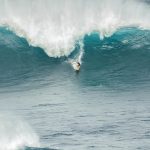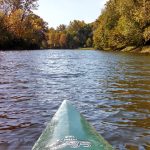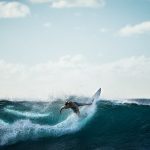It is assumed that surfing first began in 18th-century Hawaii, with the original inhabitants of the Pacific Islands participating in the activity by riding the waves on wood boards. The practice of this activity eventually went to the mainland of the United States and beyond.
Gaining traction as surfing events began occurring in places like Australia, California and New Zealand.
Surfers from across the globe, through communication and association with one another, developed distinctive ways of surf approaching, affected by their backgrounds.
WHEN WAS SURFING FIRST INVENTED?
Polynesians originated the activity of surfing prior to colonial times. It is thought that wave-riding has been around for more than four thousand years and its techniques were shared through generations by word of mouth. It wasn’t until 1885 that the Hawaiian Islands were introduced to the sport of surfing, by three individuals with British roots: George Freeth, Alexander Hume Ford and Jack London.
Surfing became increasingly famous in Hawaii, which led to more people starting to partake in the activity. Surfing is still a favorite activity of many people who visit the beach. Devotees of the sport still honor its beginnings in Oceania and revere their ties to surfing heritage.
By continuing to practice surfing, surfers are ensuring that the pastime remains alive, maintaining a tradition handed down through the ages. We should all put in an effort to venerate and defend the remarkable legacy of surfing.
WHERE DID SURFING ORIGINATE FROM?
Surfing has its roots in the Polynesian islands, where people have been riding the swells of the ocean for centuries. The earliest record of this sport by Europeans was when Captain James Cook and his team went to Hawaii in 1778.
Since its inception, the art of surfing has propagated to numerous areas of the globe, growing in fame as a recreational pursuit as well as a competitive game.
Surfers who are up to date with the most modern trends are apt to use specifically-made boards in order to get the greatest benefit from any kind of wave, regardless of its size.
Although certain components of the classic Hawaiian way of riding the waves are still practiced today, for example, paddling with arms or floating unregulated along the surface, more preeminent fans of the sport presently choose to use a board to cruise the water.
No matter what method is employed, the skillful movement within the often-shifting environment while keeping afloat is part of any type of surfing. Surfing offers an exciting challenge and requires a lot of prowess, making it a go-to activity for many people of all ages.
Surfing is no longer relegated only to recreational activities but is now entrenched in various national cultures across the globe, with professionals taking part in competitions and star surfers coming from multiple countries such as Australia, South Africa, Brazil, Mexico and even Europe. Nowadays.
If you travel to any seaside community, you will notice tons of heartfelt riders of the waves lounging near the shoreline or preparing to hit the water. No matter how much experience one has, surfing has something for each individual who wishes to have a pleasant experience out at sea.
From beginners just starting to learn the basics to advanced surfers looking to increase their abilities, everyone can find something in surfing.
WHY WAS SURFING CREATED?
Surfing originated as an activity to have fun in the ocean and ride its swells on the islands of Polynesia. In Hawaii, surfing was utilized by the ancient kings for purposes of transporting members of royalty from one island to the other.
Surfing developed into a pastime that was appreciated by everyday people. It rapidly gained traction beyond the group of islands and soon became a widely loved activity all over the globe.
Surfing as it is known today arose from the traditional practices and culture of the Hawaiian islands, and is most commonly seen near the coast of California. Surfers are widely associated with a love for the natural environment and its mightiness, both extolling admiration and delight when encountering a wave.
Up to this point in time, surfing continues to be a significant aspect of numerous island customs – allowing people native to the region to couple with their roots, as well as savor the sea and all its miracles.
Surfing has gone through extensive alterations over the years, transforming into a widely recognized competitive sport. Despite the modifications, it has kept its original essence as a fun activity for those who show appreciation for the awesome power of nature.
People everywhere have developed a mutual admiration of the sea, which unites them through surfing; thusly, powerful relationships are formed. The traditional Hawaiian influences still have a great impact on the activity of surfing, even if it is being done in any location nowadays.
Riding the waves of the ocean is more than a pastime – it is a way to make a powerful bond with nature from a profoundly spiritual angle. Individuals can take part in something bigger than themselves and recognize the force of the natural world.
The fundamental origins of this enduring practice have been preserved, conferring upon it a veneration that will continue for ages.
WHO WAS THE FIRST SURFER?
It is commonly accepted that surfing originated from Polynesians and Hawaiians in the past who used this activity both for leisure and as part of their spiritual rituals. The first recording of a person surfing was Duke Kahanamoku, a famous Olympic swimmer from Hawaii, who brought the activity to prominence in the 1920s by touring the world to demonstrate his surfing expertise.
He is commonly known as the progenitor of modern-day surfing. Kahanamoku was the one to bring surfing to locations such as the United States, Australia and other nations, sparking a wave of surfers around the planet. Many people think that his intense enthusiasm for surfing has permanently altered the sport.
Kahanamoku is praised for bringing attention to surfing and making it easier to practice internationally, which helped it become the beloved activity it is nowadays. His legacy still motivates surfers even many years after his death.
Owing to Duke Kahanamoku’s commitment and enthusiasm towards surfing, it has become a widely appreciated leisure activity in multiple countries worldwide. It is a proof of his dedication and eagerness that surfing is still cherished by individuals of assorted ages and backgrounds.
During his lifetime, he revolutionized how people consider surfing as well as how highly we rate its magnificence and significance.
The influence of his behavior has had a permanent effect on our society, completely transforming how we enjoy this exciting sport. Even to this day, Duke Kahanamoku is still remembered as one of the most influential people in the history of surfing.
DUKE KAHANAMOKU
Duke Paoa Kahinu Mokoe Hulikohola Kahanamoku has a lasting impact on the history of surfing that is still felt to this day. The indigenous Hawaiian swimmer won five Olympic medals.
Kahanamoku traveled around the globe to put on swimming performances and took advantage of the time to spread his passion for surfing. In 1912, Kahanamoku went to Southern California to initiate the sport of surfing.
He journeyed to Sydney’s Freshwater Beach on the Christmas Eve in 1914, which kindled Australia’s obsession with surfing. Kahanamoku sparked the global recognition of surfing, though it was a coincidental chance of him and Californian Tom Blake running into each other in a movie theatre in Detroit that really ignited the flame.
Kahanamoku was invited to Hawaii by Blake, thus fanning the fire further.
THE CALIFORNIA REVOLUTION
Tom Blake, a seasoned lifeguard and waterman, was among the originally very few individuals from the mainland region to take up the Hawaiian habit of wave riding. If Duke Kahanamoku is credited for bringing the traditional Hawaiian sport of surfing to global attention, it is Blake who is credited for turning it into a popular activity for people in seaside locations in the United States.
He attempted to ride the waves at the Santa Monica Swim Club in 1921 while he was employed there, but he didn’t achieve a lot of progress right away. In those days, no surfboards existed that were intended for novice riders. In 1924, his enthusiasm for surfing had become so great that he chose to act upon Kahanamoku’s suggestion to travel to Hawaii.
In no time at all, Blake had formed a bond with the Kahanamoku family, and for the following three decades, he resided and rode the waves in both Hawaii and California.
Blake’s passion for the sport and its traditions caused him to reconsider the engineering of surfboards. In 1929, Blake constructed a board with a wooden internal structure providing support, reducing the weight of a surfboard significantly. After a period of three years, Blake was granted a patent for his creation.
His light board allowed surfing to become accessible to multiple people who were not able to lift heavy, 200-pound classic solid wood longboards. Blake had the initial thought of attaching a fin or keel to a surfboard, even though this would have been implemented eventually regardless.
Blake’s devotion to the Hawaiian surf lifestyle and the fabrication of surfboards have helped to form the sport as it is recognized right now. He created the first volume regarding surfing in 1935, called Hawaiian Surfboard.
BOB SIMMONS
Simmons is largely to thank for the strides made in the development of surfboard building. Blake transitioned away from heavy, finless wooden boards, however, Simmons went farther and introduced lightweight and durable materials to a small twin-fin shaped for greater performance. Without Simmons, we’d all still be riding massive longboards.
Despite limited high school experience, Simmons was still awarded a scholarship at Caltech. He was an incredibly intelligent individual who managed to get the highest grades without completing any extra assignments or preparing for exams.
He acquired a passion for making the swiftest surfboards on the planet during the 1950s following his service as a mathematician for Douglass Aircraft. He tried out different types of materials such as balsa, plywood and Styrofoam and discovered that an amalgamation of these materials provided him with the ultimate advantages.
Nevertheless, how he used hydrodynamic theory got from Daniel Bernoulli’s Law of Lift transformed everything for good.
Simmons studied the history and composition of naval ships and aircraft to come up with a core made of polyurethane foam and a wooden stringer for backing. He encased his customized surfboard form in fiberglass, a way of building which is still the foundation for the production of surfboards today.
The combination of form and materials was unlike any other surfboard design that had been seen before. Surfing quickly transformed from a recreational pursuit to an intense competition largely due to Bob Simmons’ ingenuity.
THE ENDLESS SUMMER
The 1960s were a time of mixed emotions when it comes to mainstream surfing. It was both an excellent and troubled period. The Beach Boys, among many other famous groups, took inspiration from California’s beach lifestyle.
Movies with Frankie Avalon as the lead character that presented surfers in a funny light made Hollywood a lot of money. Despite the circumstances, it was not a total loss, due to the work of a single documentary filmmaker.
The film known as The Endless Summer first had a limited run in the theaters in 1963 before it officially premiered in 1965. The movie traces the journey of Michael Hynson and Robert August as they traverse the globe in pursuit of the ultimate wave.
The travelling experience of theirs encouraged a huge number of surfers to contemplate the prospect of embarking on a global surfing excursion. Even now, Bruce Brown is likely the single largest influence on the development of global surf tourism.
Roger Ebert, a well known movie reviewer, commented that Ben Brown’s photography was so stunning it made one question if the standard in Hollywood had been pushed too far. The observation was confirmed by surfers worldwide.
Rather than having the same take as the typical surf films from Hollywood, The Endless Summer depicted surfers as individuals with a diverse appreciation for culture as well as an enthralled reverence for the outdoors.
Yes, they did some partying along the way. The ’60s California surfers were very passionate about being in the sea, and this has influenced numerous following generations to take part in the sport for the correct motives.
Brown’s documentary made a total of $20 million at the theaters, and it has even received the honor from the Library of Congress to be preserved in the country’s National Movie Registry.
THE FUTURE OF SURFING
The World Surf League’s choice to exchange Lower Trestles for the Freshwater Pro at Kelly Slater’s Wave Ranch implies that surfing is heading towards the interior in the future. Many surfers take pleasure in tapping into the strength of nature through surfing in the ocean; they wouldn’t be content with a generated wave.
I’m certain if the opportunity was presented for someone to ride a perfect wave in an area without a lot of people, they would without a doubt take advantage of it.
Relocating further inland holds a plethora of profitable potential for the entire industry. It is still open to debate whether this is advantageous for the normal surfer. Will individuals from areas such as Ohio learn to surf and attempt to display their abilities in the sea?
Will surfers discard their customary locations in favor of the perfect waves offered by a Wave Ranch closeby? It is uncertain what the future holds, but like with any changes that occur naturally, we all just need to accept them as they come.
One thing’s for sure. It would be wonderful to have surfing presented in the Olympics with some really good waves. Even if those waves are considered “artificial.”




